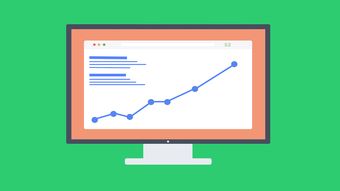
In today's digital age, having a website is essential for businesses and individuals alike. However, simply having a website is not enough; it must also perform well to ensure user Satisfaction and achieve business objectives. To optimize the network for new websites, we need to consider various factors such as web hosting, content delivery networks (CDNs), caching, and load balancing. In this article, we will discuss these aspects in detail and provide guidance on how to improve network Performance for new websites.
1、Web Hosting
Choosing the right web hosting provider is crucial for ensuring optimal network performance. When selecting a hosting provider, consider factors such as uptime, server location, server specifications, and customer support. Look for a provider that offers at least 99.9% uptime, has servers located near your target audience, and provides adequate resources (CPU, RAM, storage) to handle your website's traffic. Additionally, make sure that the provider offers reliable customer support to address any issues promptly.
2、Content Delivery Networks (CDNs)
A CDN is a network of servers distributed across different geographical locations that store and deliver content to users based on their proximity. By using a CDN, you can significantly reduce the latency and improve the loading times of your website. When selecting a CDN provider, consider factors such as the number of data centers, the quality of their infrastructure, pricing, and ease of integration with your website. Some popular CDN providers include Cloudflare, Akamai, and Amazon CloudFront.
3、Caching
Caching is the process of storing frequently accessed data in memory or on disk to reduce the time required to retrieve it. Implementing caching on your website can help reduce the load on your server and improve response times. There are several types of caching techniques, including browser caching, server-side caching, and database caching. To implement caching effectively, consider using tools like Memcached or Redis for server-side caching, and configuring your web server (e.g., Nginx, Apache) to enable browser caching.
4、Load Balancing
Load balancing is the process of distributing network traffic across multiple servers to prevent any single server from becoming overwhelmed. This technique can help improve the availability and scalability of your website. To implement load balancing, you can use hardware load balancers, software load balancers, or cloud-based load balancers provided by hosting providers. Some popular load balancing solutions include HAProxy, Nginx, and AWS Elastic Load Balancing.
5、Compression and Minification
Reducing the size of your website's files can help improve its loading times and overall performance. This can be achieved by compressing files (e.g., using Gzip) and minifying resources such as HTML, CSS, and JavaScript. Minification involves removing unnecessary characters (e.g., whitespace, comments) from code without affecting its functionality. Tools like UglifyJS and CSSMinifier can help automate the minification process.
6、Image Optimization
Images are often the largest assets on a website, so optimizing them can have a significant impact on performance. To optimize images, consider using a combination of techniques such as compression, resizing, and format conversion. Tools like TinyPNG and ImageOptim can help automate the image optimization process. Additionally, consider implementing lazy loading (deferring the loading of images until they are visible in the viewport) to further improve performance.
7、Mobile Optimization
With the increasing use of mobile devices to access the internet, it is essential to optimize your website for mobile users. This includes implementing responsive design (using CSS media queries to adjust the layout based on screen size), optimizing images for mobile devices, and minimizing the use of large resources that may affect mobile performance. Google's Mobile-Friendly Test can help you assess your website's mobile compatibility.
8、Monitoring and Analytics
To continuously improve your website's performance, it is essential to monitor its performance regularly and analyze the data collected. This can be achieved using tools like Google Analytics, New Relic, and Pingdom. These tools can help you identify bottlenecks, track page load times, and monitor server response times. By analyzing this data, you can identify areas for improvement and make informed decisions about optimizing your website's performance.
In conclusion, optimizing the network performance for new websites involves considering various factors such as web hosting, CDNs, caching, load balancing, compression, image optimization, mobile optimization, and monitoring. By implementing these techniques effectively, you can improve your website's performance, enhance user experience, and achieve your business objectives. Remember that optimizing network performance is an ongoing process, so it is essential to monitor your website regularly and make adjustments as needed to maintain optimal performance.
评论列表 (0条)